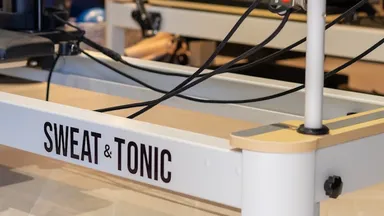
How to Design an Effective Newsletter to Drive Customer Engagement
Last updated: June 23, 2025
Email newsletters are a powerful tool for staying connected with your clients and driving business growth. However, if you're not sending the appropriate emails at the right time and with the right content, you may not achieve the desired results. Even if you've been crafting newsletters for years, this blog provides fresh insights and practical tips to help you refine your strategy and maximize your impact with every send.
For fitness and wellness business owners, newsletters are powerful tools to keep clients informed, inspired, and engaged. Whether you own a yoga studio, run a gym, or operate a wellness spa, the key is designing newsletters that don't just get opened but drive meaningful customer engagement. In this blog, we'll explore what it takes to create an effective email newsletter.
Key elements of an effective email newsletter
An effective email newsletter does more than just update subscribers; it serves as a strategic tool for engaging your audience and fostering meaningful interactions. By incorporating a few key elements into your newsletter, you can create a newsletter that not only informs but also connects with your subscribers.
A catchy subject line
Your subject line determines if your newsletter will be opened or ignored. It's your first impression, so it's essential to make it count. The tone should align with your brand identity and the overall voice of your website. Most importantly, your subject line should be clear, concise, and compelling—delivering immediate value or sparking curiosity to encourage clicks.
Use action-oriented language, highlight a benefit, or tease intriguing content to draw readers in. For example, the subject line, "Exclusive Inside: Members-Only Perks Just for You" creates a sense of urgency and intrigue with a focus on exclusivity.
A branded, mobile-responsive template
Your email template sets the foundation for your newsletter's success. It should be branded, well-organized, and visually consistent, ensuring readers can easily navigate the content and take action. The good news is that you don't need to be an expert to make this happen. Many automated marketing and email platforms offer customizable templates to simplify the process.
With the email marketing platform, Attentive, you can choose from pre-designed templates to build newsletters quickly and save time or create your own template to perfectly align with your brand's identity. Plus, corporate controls make it easy to share templates across multiple locations, ensuring brand consistency no matter where your team is based.
Finally, your template should be mobile-responsive, adapting to any screen size. This ensures your newsletter looks great on computers, phones, and tablets.
Compelling content
By far the most important part of your newsletter is the written and visual content inside. Remember: shorter and simpler is better. Your customers are busy, just like you, which means they don't have time to scroll through a complex email.
Here's how to make your newsletter content as effective as possible:
- Focus on two to three topics maximum: By limiting your content to just a few topics, you can dive deeper into each one, making your messaging more impactful and easier to digest.
- Get straight to the point. Each topic should include 200 words max. If you need to include more detail, link to a blog post on your website.
- Put your most important content first. Keeping your most important content at the top increases the likelihood that those who open your email will read what matters most. Be sure to include a call-to-action (CTA) button above the fold, i.e., before readers have to scroll, to give it the attention it deserves.
- Use visuals and branded imagery. High-quality images, GIFs, and videos enhance engagement in emails and make them more appealing. They aid in storytelling, allowing you to connect with your audience while also breaking up the text in your newsletter for improved readability. Keep your images to 2-3 max, and when in doubt, keep an 80:20 text-to-image ratio in mind. Not only does this help your email load faster for readers, but it also prevents your newsletter from landing in spam folders.
A clear call-to-action (CTA)
Although there may be multiple topics, there should be one main action you want subscribers to take. When drafting your CTA, keep the text direct and aligned with your brand voice: "Try your first class on us," "Book a free wellness consultation," and "Start your wellness journey today" are simple, yet effective examples.
Email newsletter tactics to consider
Now that you know what makes a newsletter effective, let's dive into five tactics you can use to create a newsletter that drives engagement for your fitness or wellness business.
Grow your subscriber list size
Email newsletters are only as effective as the audience receiving them. Without subscribers, there's no one to engage with your content–that's where sign-up units come in. These forms, placed on your website, social media, or other digital touchpoints, make it easy for visitors to subscribe to your email list.
By offering incentives like discounts, exclusive resources, or insider updates, you can attract more sign-ups and steadily grow your audience. The larger and more engaged your subscriber list, the greater the impact of your newsletters.
Segment your audience
Segmentation involves dividing your email list into smaller, more targeted groups based on factors like demographics, interests, or behavior. For a fitness or wellness business, this could mean creating segments for:
- New subscribers who haven't attended a class yet.
- Loyal members who attend regularly.
- Clients interested in specific services, such as yoga, personal training, or nutrition counseling.
By tailoring your content to each segment, you can send newsletters that resonate more deeply with your audience. For example, offer a free intro session to new subscribers or promote exclusive member benefits to loyal clients.
Personalize your communications
Take your segmentation strategy to the next level with personalization. From tailoring your newsletters to match your subscribers' preferences and interests to addressing them by name, you can create content that feels more relevant and personal.
For example, if a subscriber is passionate about HIIT workouts, send them newsletters featuring exclusive promotions, tips for maximizing their HIIT sessions, or updates about upcoming classes.
When your audience receives content that speaks directly to their interests, they're more likely to open, read, and engage with your emails.
Organize your sends
Timing and consistency are important when it comes to email marketing. Decide on a regular cadence for your newsletter and stick to it, whether it's weekly, bi-weekly, or monthly. Some tips include:
- Choosing the right time: Experiment with sending emails at different times and days to determine when your audience is most active.
- Creating a calendar: Plan your newsletters around key dates like New Year's resolutions, Black Friday sales, or upcoming fitness challenges.
- Avoiding overload: Too many emails can overwhelm your audience, while too few might cause them to lose interest. Aim for a balance that fits your audience's preferences.
Pro tip: Use analytics to determine the best days and times to send your emails for maximum open rates.
Track and analyze performance
Tracking your newsletter's performance is essential for improvement. Use email marketing analytics to measure metrics like:
- Open rates: Are your subject lines engaging enough?
- Click-through rates (CTR): Are readers engaging with your CTAs?
- Conversion rates: Are newsletters driving sign-ups, purchases, or bookings?
Review these insights regularly to identify what's working and where adjustments are needed. If open rates are low, consider testing new subject lines or resending the email to non-openers with a fresh headline.
Combine it with SMS marketing
Expand your email marketing efforts by pairing it with SMS. Emails offer in-depth information and value, while SMS messages provide quick and timely updates that capture attention immediately. By combining these channels, you develop a cohesive communication strategy that increases engagement and broadens your audience.
The key to newsletter success: Attentive
A newsletter can revolutionize your fitness or wellness business, and with Mindbody's partnership with Attentive, creating an effective one is easier than ever. You will have all the tools needed to seamlessly create and design standout emails and text messages. Additionally, you can segment your communications to deliver targeted and impactful messages that drive results. This collaboration empowers your business to streamline operations, build stronger client relationships, and unlock exceptional revenue growth.



